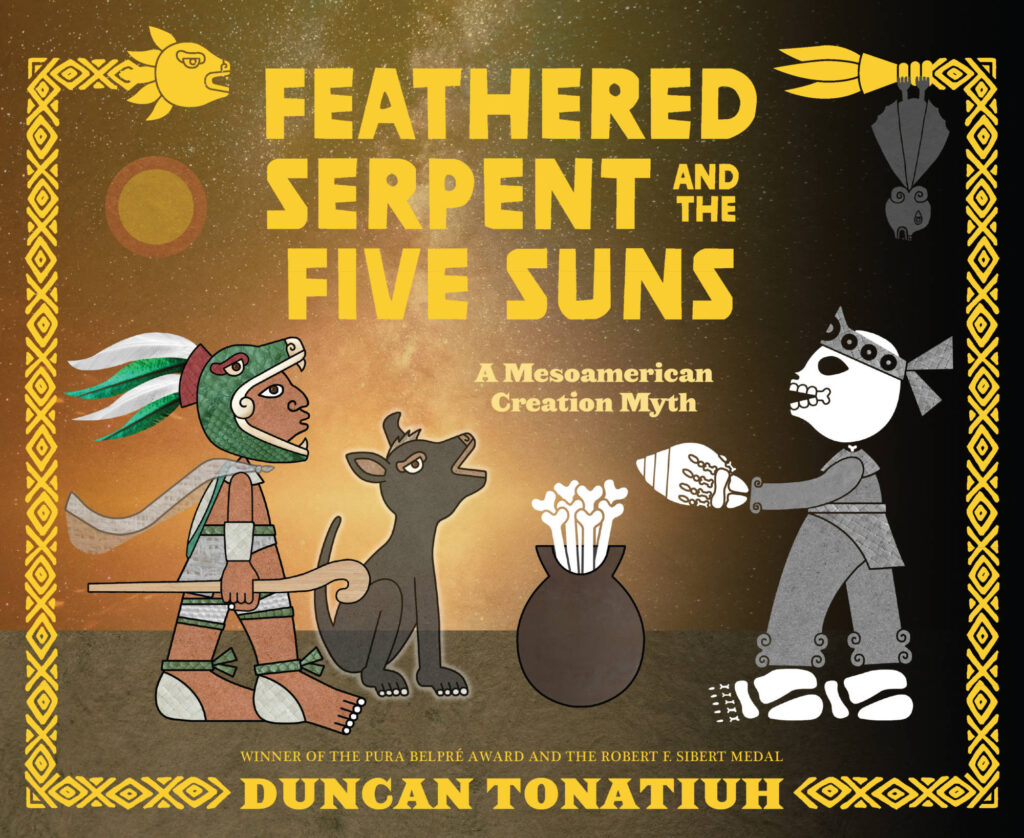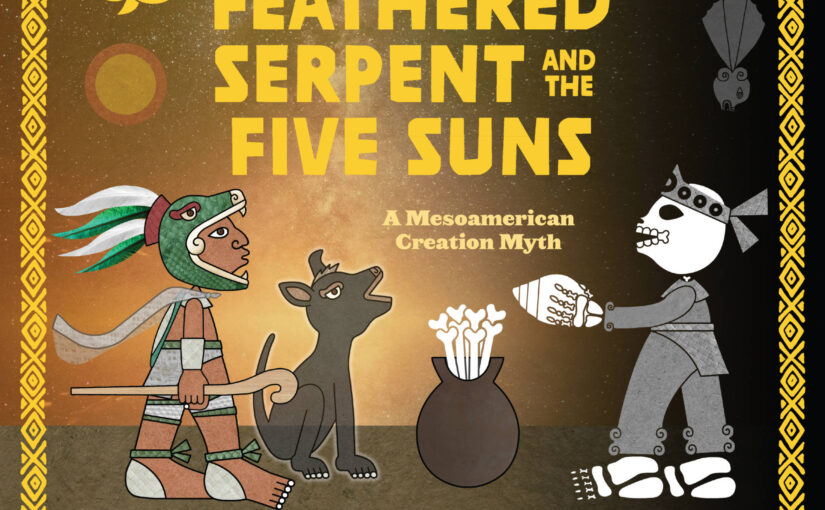Myths are an excellent way to teach. Due to their repetitious nature they’re able to softly teach people of any age. I teach an ESL class and in each lesson on different cultures there’s a mythical story that I read with the students. One of my favorites is Crow Brings the Daylight from Canada, which is worth checking out if you’re unfamiliar with it. Feathered Serpent and the Five Suns is a Mesoamerican myth about the origin of humans and the Gods that are representative of Central and South America. The book by Duncan Tonatiuh reads like an elementary aged adventure story. There are monsters, a magical quest and lessons that the story will infer for readers to pick up on.

The fact that myths have a massive story to tell is one reason why I like teaching them to emerging readers. Their stories have great characters, possibly some anthropomorphic animals, a story of good vs. evil-with possibly a wildcard and most importantly they allow readers to really think about what could happen next. Because myths might be unknown to young readers they won’t know the plot twists or what to expect. When they don’t know that, they’ll have to predict what happens next. If you’ve never taught a reluctant reader how to practice the art of ‘what happens next’, then it’s akin to retrieving a pile of bones from Mictlan.
Aspects of Feathered Serpent and the Five Suns may be familiar to some readers. For us, the only part that was familiar was Quetzalcoatl, the winged serpent who starred in the semi, cult-classic film Q from 1982. As wonderfully cheesy as that film was, the book is as fun, colorful and direct in telling readers about the five tonatiuhs and the way in which humans evolved.
A tonatiuh is essentially an age and in this myth it’s represented by the sun. The first tonatiuh had the gods creating humans with sacred bones and mud. We were apparently huge, but very fragile and eventually fell down and became the mountains. The second and third tonatiuh also met with frustrating ends. However, the fourth one had humans with hearts and this was good. We honored the gods and were very nice, but we were also very lazy and didn’t want to work, so the gods turned us into birds.
Rightly so, the gods were tired of humans so they gave the sacred bones to the lord of the underworld for storage. Quetzalcoatl had hope for the humans though and decided to make the quest to Mictlan to retrieve the bones and give it (see: us) one more try. Here he encountered a series of challenges that tested his physical strength, courage and mental acuity. If he was worthy, then he’d be able to roll the bones as it were, and see if humans could succeed on the fifth attempt.
The art and story are both by Duncan Tonatiuh and each aspect has qualities that make the book work. The myth of the feathered serpent could certainly take up chapters of a middle school book. The fact that he could condense a story so massive in scope is impressive. While you’re reading the book it’s impossible not to relate elements of it to movie scenes given the action that would take to set them up.
The art in Feathered Serpent and the Five Suns has a style that looks completely at home in this book. Most emerging readers will recognize Tonatiuh’s art as being different, yes also feeling very familiar. This is a classic style of art that is ubiquitous with Central or South America. It’s immediately calming, engages your imagination and captures the global scale of the story.
Having said all of this, I understand that some kids, under no circumstances will read myths. Our oldest was like that. Given that, it might be helpful to present Feathered Serpent and the Five Sun as an action tale. It will also help readers if they go to the glossary first and practice pronouncing the names of the gods. Chinconahualoyan can be intimidating when you look at it, but when you see it as chee-con-ah-wal-OH-yan it’s much more palatable and a word that those kids will be able to digest easily.
Feathered Serpent and the Five Suns is by Duncan Tonatiuh and on Abrams Books.
There are affiliate links in this post.





 Facebook
Facebook Twitter
Twitter Flickr
Flickr GooglePlus
GooglePlus Youtube
Youtube